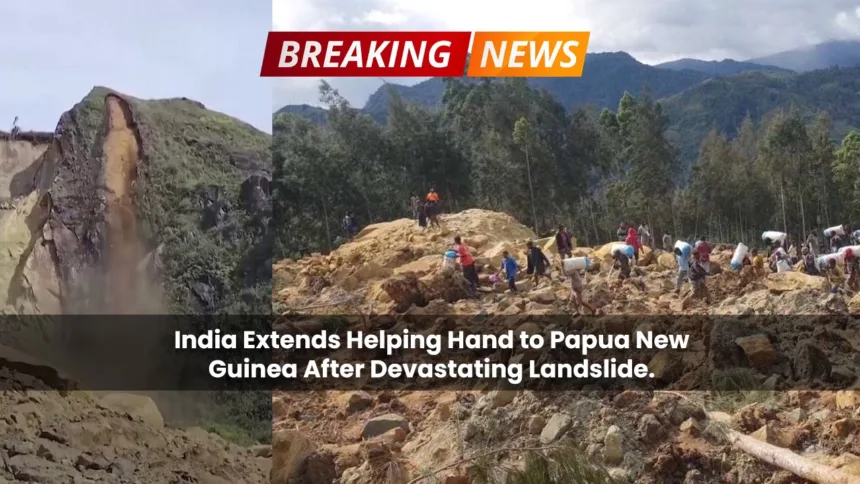Prime Minister Narendra Modi has extended heartfelt condolences and immediate aid to Papua New Guinea following a catastrophic landslide in the northern Enga region that has buried over 2,000 people and affected thousands more. The disaster occurred when a mountain collapsed, causing widespread devastation and prompting urgent rescue efforts.
Deeply saddened by the loss of lives and damage caused by the devastating landslide in Papua New Guinea. Our heartfelt condolences to the affected families and prayers for speedy recovery of the injured. India is ready to offer all possible support and assistance.
— Narendra Modi (@narendramodi) May 28, 2024
“Deeply saddened by the loss of lives and damage caused by the devastating landslide in Papua New Guinea. Our heartfelt condolences to the affected families and prayers for a speedy recovery of the injured,” PM Modi expressed in an X post. Emphasizing India’s readiness to assist, he announced an immediate relief assistance of USD 1 million to support the ongoing relief, rehabilitation, and reconstruction efforts.
The Indian government’s statement highlighted the gesture as part of India’s commitment to its partners under the Forum for India-Pacific Islands Cooperation (FIPIC). “As a close friend and partner… the Government of India extends an immediate relief assistance of USD 1 million to support relief, rehabilitation and reconstruction efforts,” the statement read.
More Read
Ongoing Rescue and Relief Efforts
Since the landslide struck, thousands of residents have been evacuated from the still-active danger zone. The challenging terrain and remoteness of the northern Enga region have significantly hampered rescue operations. Relief teams, arriving since Friday, face the arduous task of navigating difficult access routes, with the ongoing tribal unrest necessitating military escorts.
Residents have resorted to using shovels and bare hands to search for survivors. However, the chances of finding more survivors are slim, as acknowledged by UN officials. “It is not a rescue mission, it is a recovery mission,” stated UNICEF Papua New Guinea’s Niels Kraaier. Satellite imagery has revealed the extensive damage, with debris severing the region’s only road and cutting through bushland.
Enga provincial administrator Sandis Tsaka warned of the continuing threat. “The tragedy is still active. Every hour you can hear rock breaking — it is like a bomb or gunshot and the rocks keep falling down,” he told AFP.
International Support and Aid
Papua New Guinea has received offers of aid and support from several countries, including Australia, China, and the United States, which have pledged millions to assist in the relief efforts. Military personnel have established checkpoints and are facilitating the movement of residents to evacuation centers. Despite the deployment of heavy equipment, the delivery of aid remains slow due to the challenging conditions.
Key Points of the Disaster
- Evacuations and Military Involvement: Military personnel have set up checkpoints and are aiding in the evacuation of residents to safer areas.
- Shift from Rescue to Recovery: With little hope of finding more survivors, efforts are now focused on recovery rather than rescue.
- Scale of the Disaster: Satellite images show the vast extent of the landslide, with significant disruption to the region’s infrastructure.
- Global Response: In addition to India’s immediate assistance, Australia, China, and the US have also offered substantial aid to support the rescue and relief operations.
- Difficult Terrain and Delayed Aid: The remote location, coupled with challenging terrain and tribal unrest, has delayed the arrival of heavy equipment and aid.
As Papua New Guinea grapples with the aftermath of this devastating andslide, international solidarity and support are crucial in aiding recovery and rebuilding efforts.












